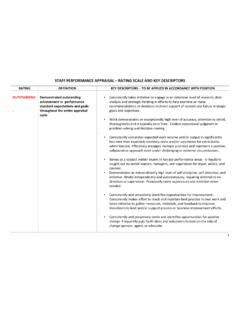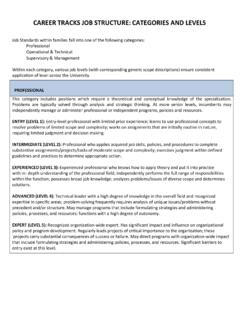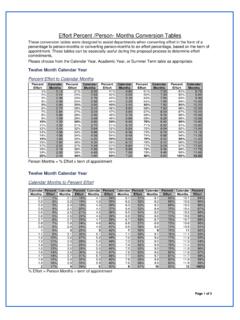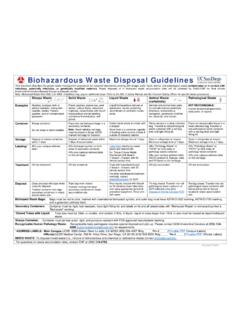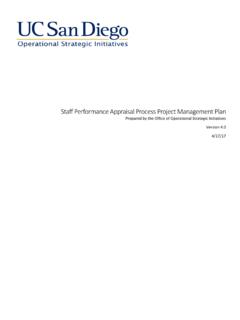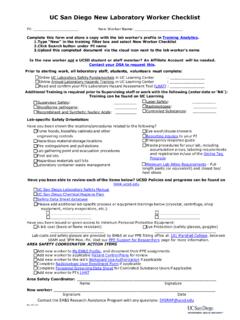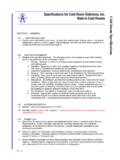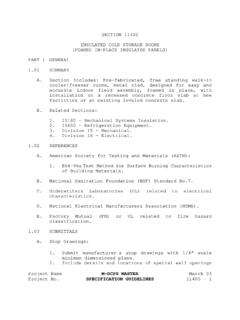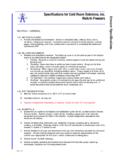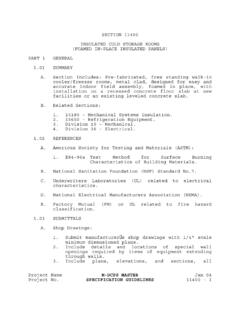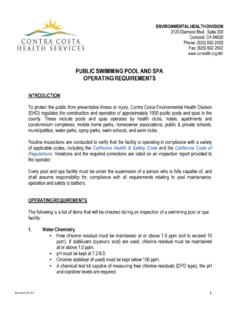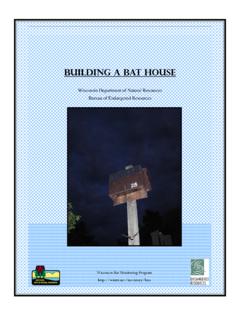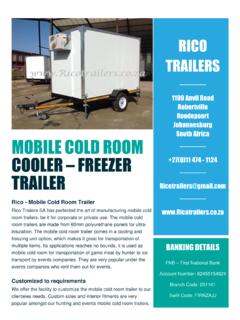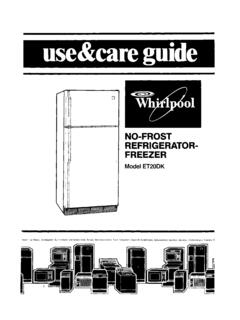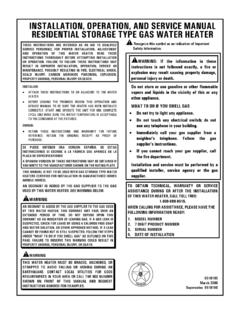Transcription of Server Room Standards mh
1 UCSD Server room Standards The following Standards provide campus units with information on how to design or retrofit small to medium size computer Server rooms. Following these Standards will help to ensure that critical computational resources are maintained in an environment that protects them both during normal operation, as well as in the event of power failures, fires, floods, and other emergency conditions. For more information, or for questions regarding these Standards , contact General Space Characteristics room specifications room walls, ceiling, and doors should be sound isolated from other occupied areas. Doors should be 42" to 48" wide, and 8' tall. Antistatic floor finishing (no wax) is recommended for raised floor tiles or sheet vinyl. room should not have windows (for security, sound, and environmental management reasons). Equipment Maximum electrical density of computing equipment in a Server room should not exceed 300 watts per square foot.
2 Computer racks should have seismic bracing and proper grounding. Computer racks should have adequate clearance per manufacturer specifications (but no less than 48" front and 36" rear clearance); the room itself should have a minimum 9' ceiling. The room should have at least one phone. Fire prevention room should have an adequate fire suppression system (a pre-action type system is highly recommended). room should be fire rated if cabling and cooling systems are combined in the same space above the ceiling or below the floor. Cooling An under floor air distribution system is preferred, although ducted systems are acceptable. In either system, racks should be arranged in a hot isle/ cold isle configuration. If under floor, minimum height should be 24" and the raised floor must be designed to accommodate the weight of fully loaded Server racks, as well as any lifting and transportation devices used in the movement of racks, computational equipment, and ancillary support systems.
3 Mechanical Systems Air conditioning (AC) room cooling and humidity control should be via an independent AC system ( , not connected to main building system), with a return air design point temperature and relative humidity of 72 F ( 2 F) and 45% ( 5%), respectively. Chilled water based A/C systems are strongly preferred, with the intent that they use campus chilled water at a design point of supply and return temperatures of 46 F and 60 F, respectively. There should be sufficient clearance (minimum 4') between the A/C unit and computer racks in order to avoid potential damage from water leaks, as well as to allow for maintenance access. Future Planning room design should include appropriate planning for the removal of AC unit condensate (either via gravity or pump). Sufficient cooling redundancy should be considered and installed if possible; a backup refrigerant-based cooling system in parallel with the building chilled water system and multiple AC units in an N+1 design will provide the best protection against failure.
4 Sufficient future expandability and scalability shall be analyzed and designed in conjunction with the mechanical and electrical system specifications In both the design and operational phases, administrators should calculate the thermal buffer of a room as a function of typical heat load and room air volume in order to determine and plan for the time window between a cooling system failure (partial or complete) and the point at which a room temperature limit is reached. Administrators may wish to provide the means for automatic software and hardware shutdown of systems based on various environmental conditions in the Server room , , temperature, fire alarms, water sensors, etc. Electrical Systems Capacity and quality The room should have separate, dedicated power panels for both computer equipment and the A/C system. Mechanical and electrical systems should be designed for long-term, maximum expected room utilization (though not to exceed 300 watts per square foot).
5 Building power quality considerations should be taken into account to determine the need for isolation transformers, UPS systems, and other power conditioning equipment. To the extent possible, such heat generating support equipment should not be located in the Server room A Power Distribution Unit (PDU) layout is preferred, with power monitoring and UPS support provided on a per rack basis. Electrical system should be designed to provide an isolated ground, dedicated neutral, and a grounding grid. Emergency planning Emergency/backup power should not be tied into the building life safety system. The department must supply and maintain separate backup power ( , UPS or generator) if desired. Server room electrical distribution system should have easily accessible shunt trip capabilities for emergency shutdown. Alarms and Security Alarm systems Critical alarms related to the functioning of the A/C system and physical environment of the room must be mapped into the Facilities Management Energy Management System.
6 The occupying Department must also provide monitoring and alarming separate from the Facilities Management system, as needed, in order to be notified of critical environmental events in the Server room . The room should have water sensor alarms reporting to both Facilities Management and the occupying Department. Security All entrances to the room should be properly secured and alarmed where appropriate.

